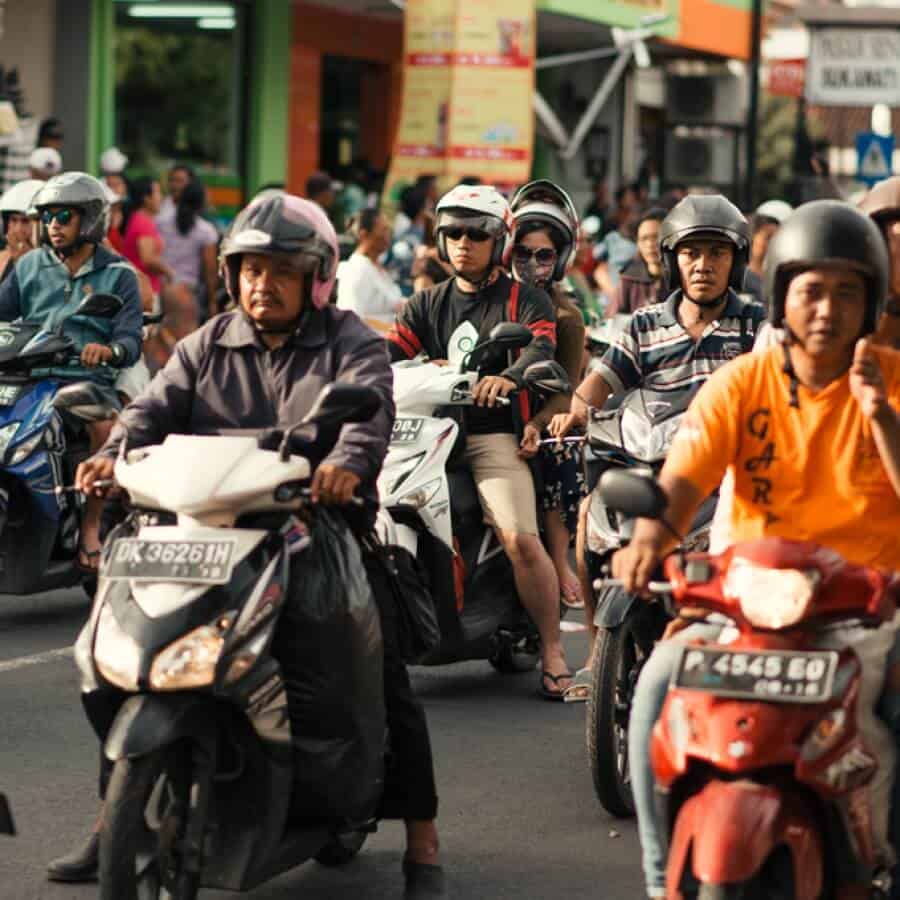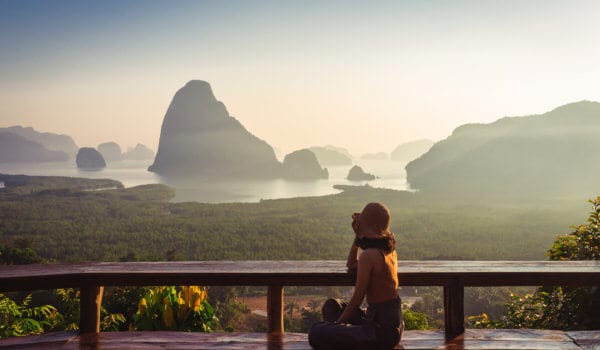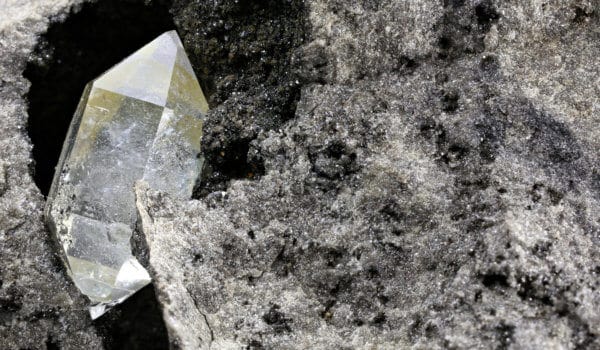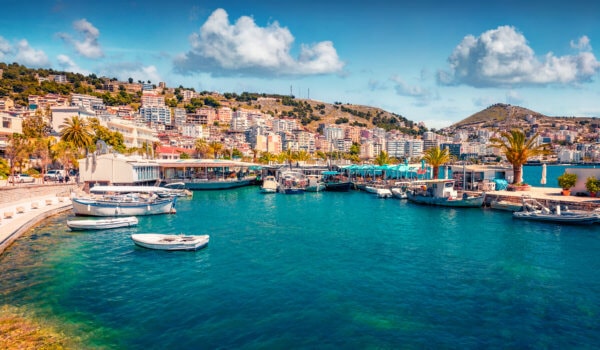It’s easy for any of us to overlook our good fortune. I started realising this as our adventure was coming to the end. Seeing many unique forms of pure happiness among our local friends reminded me to appreciate my own blessings. The people of Bali express it through being. Not having. Through giving. Not taking. All of these new perspectives about life, visible in the contrasts between our two different worlds, is what we brought home with us. We left Bali dancing salsa. There was no better way to celebrate all that this journey had taught us.
A Day with Adi
There was a rumour that Adi was one of the best guides on the island, so – we called him to devise a special tour for us. And that was pure Bingo! In one day with him, we saw and heard more than we ever would have if we had been on our own, or maybe in a couple of days time. Adi showed up that morning all dressed up in traditional clothes, wearing beautifully decorated sarong and udeng. While we were waiting for my partner he told me about these pieces of clothing.
–Sarong is a cloth worn to cover the lower part of our bodies, it is tied around the waist and falls just right below the knees. For men, it is customary for sarong to be wrapped from left to right, representing the good (dharma) – said Adi.
Over sarong, men are required to put on what is called a saputan. It’s a three-quarter-long sarong that extends from the waist to the thigh, encouraging men to cover their private area.
The Balinese believe the head is sacred and is the most valuable part of the body, so they protect it with a special headband called udeng. It is used during traditional ceremonies and gatherings, religious holidays, and in everyday life. The right side, which symbolizes goodness, is higher than the left.
We saw a whole new world with Adi that day….from the stunning temple called Gunung Kawi (which is actually an 11th-century funerary complex) to lakes, mountains, and a volcano area. But to reach the Gunung Kawi we had to walk down hundreds of steps through the valley of the Pakerisan river. The feeling of standing in front of shrines cut in the rocks, sheltered by a cliff in the middle of the jungle, is hard to describe.



These funeral monuments were dedicated to King Anak Wungsu of the Udayana dynasty and his children. In all the major touristic spots, we would meet local people, eager and persistant, but sweet in their intention to sell fruit, wooden arts and crafts, or tiny bracelets.


While driving from one location to the next, Adi told us about how the Balinese work and live. He proudly showed us a photo of his daughter, saying he couldn’t wait to have four children. I got the impression the Balinese can not say no, that they don’t have much but share all they have, and that they work hard. Also, you will never hear these lovely people raising their voices. It all can be said and resolved in peace. – If you ask people in the villages what they are living from, nobody will say it is tourism – Adi explained. – They mostly live from growing rice or vegetables and having their own little carving or mechanic workshops. Younger people love making jewelry or working as sales people in boutiques and stores. The average salaries are very low, but we manage to get by – he admits.
During our sightseeing tour, we were amazed by the way the details on the temples all around the island were crafted, especially the doors of the temples. Adi explained it was all handmade teak wood, carved using chisels. Sometimes it takes from four to six months to make just one door. And again, the more time spent in crafting them – the more precious they are.


Our final destination that day was the oldest, greatest, and holiest of all the temples in Bali, Pura Besakih known as Bali’s Mother Temple. Adi dressed us up for this special visit, in sarongs he brought. It is very hard for me to find the words to describe the first impression after I found myself standing in front of something so majestic.
For more than a millennium, Besakih Temple has risen on the slopes of Mount Agung, believed to be the home of the gods. This is, actually, an ancient artistic temple complex containing more than twenty different temples on six rising terraces.
When you arrive, Bali’s main place of worship appears suddenly in front of you, huge, sacred, and beautiful, like some kind of magnificent gateway to what you are about to see. It is called Pura Penataran Agung and is the center of the complex. It is decorated with plants and flowers – and tourists are not allowed to enter.


As we were climbing up the main path, Adi explained that we were actually climbing the mountain. Visitors can only go up in one direction or through the main entrance, and may not enter through the side courtyards. These places are reserved for local believers and family groups. It is interesting to note that each courtyard belongs to a particular family, and the members of one family all pray together in the same yard. I managed to capture one large family’s moment of prayer in one of the yards.

Local people were all around the complex. Kids were playing games around the gates of this sacred place, using it as a playground. Older ones were chatting after prayers or maybe waiting for the next one – smiling at us, as they always did.

We were not even half way up the path when we reached one of the view points. The vast area of the temple complex was below our feet. We were surrounded by breathtaking mountain scenery.

Our precious time at Pura Besakih passed quickly. While we were on our way down, heading to the exit gates, Adi suddenly looked at me and my partner and asked: – Sorry, would you exuse me for 15 minutes? We said yes and went on, but after a brief moment Adi came back with an unexpected question. – Actually, I am going to pray. Would you like to join me? My partner and I were more than surprised, honoured most of all. We looked at each other, and I said: – Well…Adi, we are not religious. – We don’t know how to pray in a Hindu temple – my partner added. Still, it was more than obvious that we were eager to experience something not many tourists get the chance to take part in. That’s when Adi spoke one of his most memorable lines. – It is perfectly ok. Come, meditate with me. You know, all human beings in this world have hopes and desires. Only the way we invoke them is different.
We went to the highest temple in that part of the complex, known for it’s unusual role: people who pray there are people unfamiliar with their whole family tree and their ancient ancestors. Adi was one of them.
We were sitting in front of a Hindu priest who warmly welcomed Adi’s two strangers, although it was uncommon practise for us to be there. I knelt while Adi and my partner sat with their legs crossed, because it is rude to position your feet facing the shrine. Adi briefly explained the procedure. Small offerings were in front of us. We closed our eyes and let go. We meditated with tiny plumeria flowers between our fingers. This was our modest offering to the Hindu gods. It was enchanting to listen to Adi chanting an ancient mantra to the supreme god of Indonesian Hinduism, Ida Sang Hyang Widhi Wasa. My mind was calm.
I caught myself living the moment and wondering: Is it possible that I am sipping holy water from the palms of a Hindu priest who is giving me a blessing in a temple on the mountain slopes of an island paradise, 11.000km away from home…
The prayers ended with the priest sprinkling us with holy water and applying roli and rice on our foreheads. The purpose of it was to signify that we had prayed. The middle of the forehead is a special part of the body in Hindu culture and represents the center of spirituality. Also, they believe it is the spot where you connect to your inner self.


The moment before we left this magical place, still overwhelmed by the praying ceremony, Adi disappeared again and came back with tiny pieces of fabric in red, black, and white. He twisted them and made two little bracelets for me and my man. Those were the sacred trinity bracelets people in Bali wear all the time. The priest blessed them before Adi gave them to us. He wanted three Gods to give us protection: Brahma (red), Vishnu (black), and Siwa (white) as creator, preserver, and destroyer – the circle of life.

We thanked him wordlessly, bowing. Very soon, it seemed like everything we had experienced, learned, and felt started streaming through the tiny strings of the bracelets, reminding us to remember.
From that moment on, two nonbelievers silently decided never to take them off.

We decided to spend our last day in Bali enjoying Sanur, the little town where we stayed. We spent some time apart, maybe to say goodbye to the island in our own way, in peace. We already knew it had been the journey of our lives. I wondered through the neigbourhood, riding a bicycle, shopping in small street markets, chatting with the local people – I felt I was becoming one of them. After an afternoon coffee I headed to the beach. A little boy and his father, both strangers, were trying to fly a kite. It was not going well. The strings were all knotted, and the wind was blowing in fits and starts. They tried several times, but had no luck. The little boy, not more than three years old, was on the verge of tears, the father obviously sad for not knowing what to do with the kite. Out of nowhere, a tiny creature appeared running along the beach with a kite of his own. He was about five. He smiled at me and continued running. He saw the father and son with a kite lying on the sand. He was local, he approached them and the only thing he knew how to say was hello. Wordlessly, he gave his kite to the other boy, did something to the broken kite to make it work, and gave a very significant look at the father. He then gave back the kite to the boy, showing him how to hold it. Success! He smiled, running back into the sunset, blissful, like nothing happened.
All the goodness I have seen in Bali was reflected in that fragile scene.

On our way to the villa to pick up our gear, we passed by the yoga studio in Sanur that we had enjoyed visiting so much. I remembered the words of Ade, our favourite instructor: – Practise how to let go. Otherwise, it is so easy to miss out on the experience of being. While I was in a hurry, a sign in the back yard of the studio struck me. I felt like Bali was giving us a final reminder.
It said: Take a breath. Relax. Be mindful. Give.
Namaste.
It would be almost impossible to write this story if it were not for unselfish help of our dear friend Ketut Adi Agus Saputra. Thank you, Adi!
Photos: Jelena Zoric
Support us!
All your donations will be used to pay the magazine’s journalists and to support the ongoing costs of maintaining the site.
Share this post
Interested in co-operating with us?
We are open to co-operation from writers and businesses alike. You can reach us on our email at cooperations@youthtimemag.com/magazine@youthtimemag.com and we will get back to you as quick as we can.










